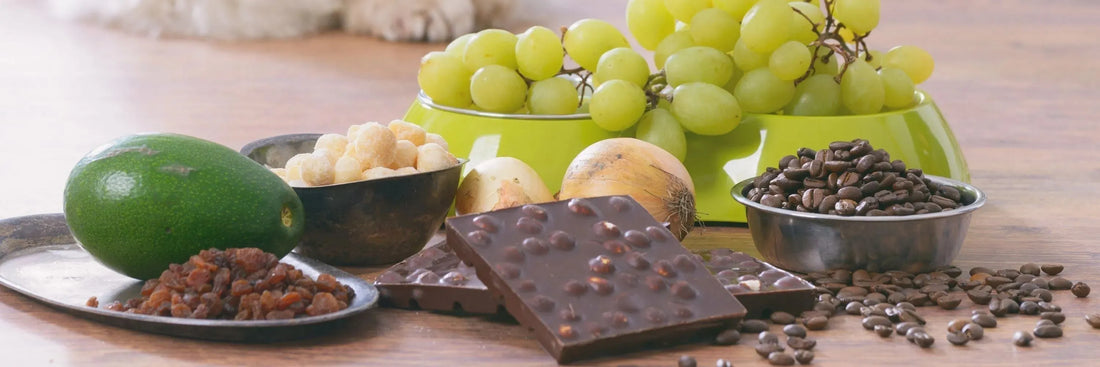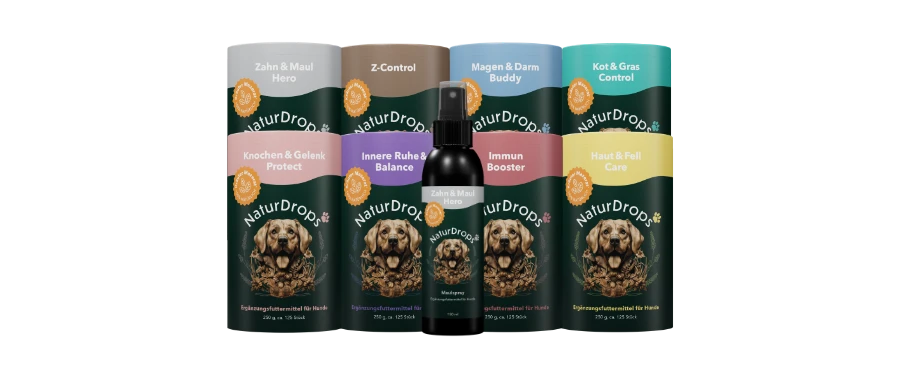
What shouldn't dogs eat? Dangerous foods & what to do in an emergency
Whether it's a dropped piece of chocolate or a curious bite into an avocado, many dogs enjoy snacking. But not everything that's harmless to us humans is also safe for our four-legged friends.
In this article, you'll learn which foods can be toxic to dogs, why this is the case, and how to react correctly in an emergency.
Why are some foods dangerous for dogs?
The dog's body processes many substances differently than the human body. Some foods contain compounds that dogs cannot break down or can only break down very slowly. This can lead to poisoning, organ failure, or even life-threatening conditions.
Smaller dogs or puppies are particularly sensitive – even small amounts are enough to cause serious symptoms.
Your dog should never eat these foods
Here is an overview of particularly dangerous foods:
- Chocolate & Cocoa: Contains theobromine, which acts as a neurotoxin for dogs. Dark chocolate is especially dangerous.
- Grapes & raisins: Can cause acute kidney failure – even in small amounts.
- Onions, garlic, leeks: Destroy red blood cells, which can lead to anemia.
- Avocado: Contains persin – toxic to many animals, problematic for dogs depending on the dose.
- Alcohol & raw yeast dough: Both can cause severe poisoning and circulatory problems.
- Macadamia nuts: Causes muscle weakness, tremors, and vomiting.
- Products containing caffeine (e.g. coffee, cola, energy drinks): Caffeine overstimulates the nervous system and can trigger seizures.
- Xylitol (birch sugar): Even small amounts can drastically lower blood sugar – potentially life-threatening!
- Raw potatoes, green tomatoes or unripe eggplants: Contain solanine, a substance toxic to dogs.
Contains solanine – a neurotoxin that can cause diarrhea, cramps and paralysis.
What to do if your dog has eaten something poisonous?
The faster you act, the better.
- Keep Calm.
- Do not use home remedies (e.g. salt water to induce vomiting – this can be dangerous).
- Call a veterinarian or poison control center.
- Have ready: your dog's weight, what was eaten, how much and when.
- If the food is processed, please bring packaging with you.
Dogs don't always show symptoms immediately. Typical warning signs include:
- Vomiting, diarrhea
- Tremors or coordination problems
- Apathy or excessive restlessness
- breathing problems
- Increased salivation
- Cramps
How you can prevent it
- Avoid table waste – no matter how faithful your eyes are
- Store food safely – especially sweets, snacks or leftovers
- Educate children and other relatives about what dogs are not allowed to eat
- Be vigilant when walking – watch out for poison bait
Conclusion
Many everyday foods are taboo for dogs—some of them even life-threatening. With the necessary knowledge, a little mindfulness, and quick reaction in an emergency, you can effectively protect your dog.
And if something does go wrong, our Stomach & Intestine Buddy supports digestion in a natural way.




